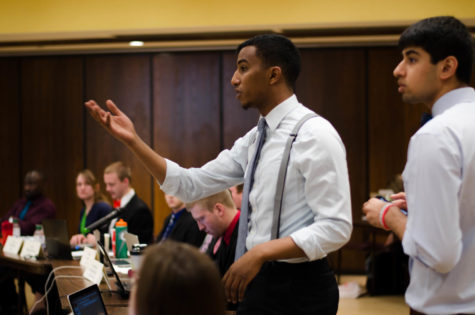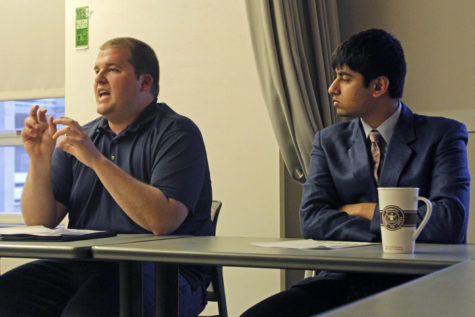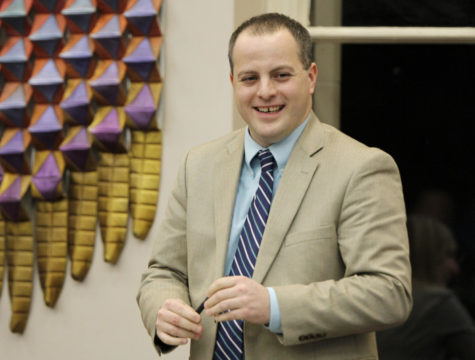ISU Cricket Club promotes unfamiliar sport at Veisha
March 29, 2006
The ISU Cricket Club offers students a chance to play a unique sport that is enjoyed around the world.
The club, founded in 2001, provides students and faculty the opportunity to play indoor and outdoor cricket year-round.
Club president Vikas Yadav said cricket is the biggest sport played in commonwealth countries such as India, Pakistan and Bangladesh.
Yadav, a graduate student in electrical and computer engineering from Kanpur, India, has played cricket since he was eight years old. He came to the United States to study at Iowa State in 2001 and said has been a member of the club since its creation.
FASTTRAK
How to play cricket
Cricket is a team game played with two teams of 11 players each. It is played on a grass field in the shape of an ellipse. In the center of the field is a 22-yard, flat strip of ground called the pitch.
At each end of the pitch there are three wooden stakes called stumps. On top of the stumps are two smaller pieces of wood called bails. The bails sit on top of the stumps and form the wickets.
A player from one team, the bowler, throws a hard ball about the size of a fist from one wicket to the other on the pitch.
A player from the other team, the batsman, tries to defend the wicket by batting the ball with a cricket bat. The batting team has one player defending each wicket.
After the ball is batted, the batsman may run to the other wicket to score a run. If the ball is thrown by one of the fielders and hits a wicket, the batsman is out.
An out is recorded if the wicket is knocked over by the pitched ball or if the batsman hits a ball that is caught by a fielder.
An inning is over after a team cannot provide a player to defend each wicket, meaning that 10 of the batsman are out. Once the inning is over, the hitting team goes on defense and the defense goes to hit.
The team with the most runs at the end of the game wins. A typical cricket match will play one or two innings, although some variations of the game define innings by a number of pitches.
– Compiled by Elliott Fifer from Cricinfo.com
Tathagata De, third-year club member from Jalpaiguri, India, said the popularity of the sport in the United States is not nearly what it is in India.
“In India, all your friends will play and you have a school team,” De said.
Yadav agreed, adding that the media has a big impact on promoting the sport in India.
“It is the biggest game that they play,” he said.
“We have national heroes that we can see on TV.”
Although many ISU students aren’t sure how to play cricket, Yadav said the club is trying to expose the game to students who may have never had the chance to play the sport before.
“I want to make this game more popular on the campus, especially among American students who have never heard about this game,” he said.
One way the club plans to do this is by holding an event during Veishea. Yadav said the club is planning to operate a booth to discuss some of the rules of cricket and demonstrate to students and faculty how the game is played.
Yadav said another main goal for the group is to contribute to “the survival and growth of the club on campus.”
With the help of GSB funding, membership fees and donations from faculty and students, approximately $7,000 was raised to allow the club to lay a turf pitch in front of Towers Residence Halls in November 2004.
The first official game was played on the pitch last April, and the club continues to use the pitch to play cricket matches among themselves and against other universities during tournaments hosted by the club.
“To attract people, we need to provide them with the facilities required to play this sport on the campus,” Yadav said.
Michael Harvey, director of Recreation Services and Sports Club Council member, said the club worked hard to pay for the pitch and is pleased the facility is available to help promote a more diverse sports club.
“Some would have said this was a limitation that we couldn’t do, but the students worked really hard,” Harvey said. “We are very glad that we can offer this facility for a more diverse sport.”
He also said he thinks the existence of such a facility will help the club get more members in the future.
“I think it will continue to grow as more traditional cricket players find out that we have a cricket club,” Harvey said.
For more information regarding upcoming tournaments, practices or how to join, visit the club’s Web site at www.stuorg.iastate.edu/cricket.









